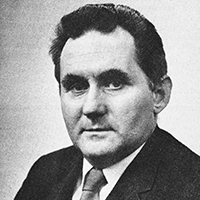Get Involved
- Optica on Ukraine
- Awards & Honors
- Diversity, Equity & Inclu...
- Early Career Professional...
- Education Outreach
- Global Policy & Affairs
- Local Section
- Virtual Engagement
- Students
-
Technical Groups
- Bio-Medical Optics
- Fabrication, Design and Instrumentation
- Information Acquisition, Processing and Display
- Optical Interaction Science
- Photonics and Opto-Electronics
- Vision and Color
- Technical Group Leadership Volunteers
- Technical Group Webinars
- Technical Group Events
- Technical Group Search
- Technical Group Prizes
- Volunteer
- Optica on Ukraine
- Awards & Honors
- Diversity, Equity & Inclusion
- Early Career Professionals
- Education Outreach
- Global Policy & Affairs
- Local Section
- Virtual Engagement
- Students
-
Technical Groups
- Bio-Medical Optics
- Fabrication, Design and Instrumentation
- Information Acquisition, Processing and Display
- Optical Interaction Science
- Photonics and Opto-Electronics
- Vision and Color
- Technical Group Leadership Volunteers
- Technical Group Webinars
- Technical Group Events
- Technical Group Search
- Technical Group Prizes
- Volunteer
Ellis R. Lippincott Award
The award was established in 1975, with Coblentz Society and the Society for Applied Spectroscopy, to honor Ellis R. Lippincott's unique contributions to the field of vibrational spectroscopy.
Society Connection
Ellis R. Lippincott was one of the pioneers in spectroscopy, making the work of today’s members possible.
Key Funders
Optica, The Coblentz Society, The Society for Applied Spectroscopy (SAS)
About Ellis R. Lippincott
 Lippincott was a vibrational spectroscopist who worked at the University of Maryland. He was known for his work on the diamond anvil cell, which is used in high pressure research, and his spirit of innovation and ability to influence other scientists.
Lippincott was a vibrational spectroscopist who worked at the University of Maryland. He was known for his work on the diamond anvil cell, which is used in high pressure research, and his spirit of innovation and ability to influence other scientists.
His first academic position was at Kansas State University, where he developed a potential function for the hydrogen bond that is usually known as the Lippincott-Schroeder potential. Forty years after the publication of this work, when the development of computers allowed sophisticated ab initio computations to be made, the Lippincott–Schroeder potential still proved to be an excellent model of the hydrogen bond. Shortly after this work was published, Lippincott moved to the University of Maryland where he showed that his experimental skills were every bit as strong as his theoretical expertise. In a very productive partnership with scientists at the National Bureau of Standards, he was responsible for the development of the diamond anvil cell, with which spectra of materials at pressures up to 50,000 atm could be measured routinely. These devices are still being used today for applications as wide as explosives studies to forensic measurements. He founded High Pressure Diamond Optics with Alan Van Valkenburg and Charles Weir in 1961.
In the early 1960s, there was a growing awareness that examiners in the US Patent Office did not consider an infrared spectrum to be characteristic of a molecule for patent purposes. Lippincott presented a definitive paper on “The Limitations and Advantages of Infrared Spectroscopy in Patent Problems” which was subsequently published in the Journal of the Patent Office. As a result, the Patent Office’s view of IR spectroscopy underwent a major change. Lippincott died in 1974.
